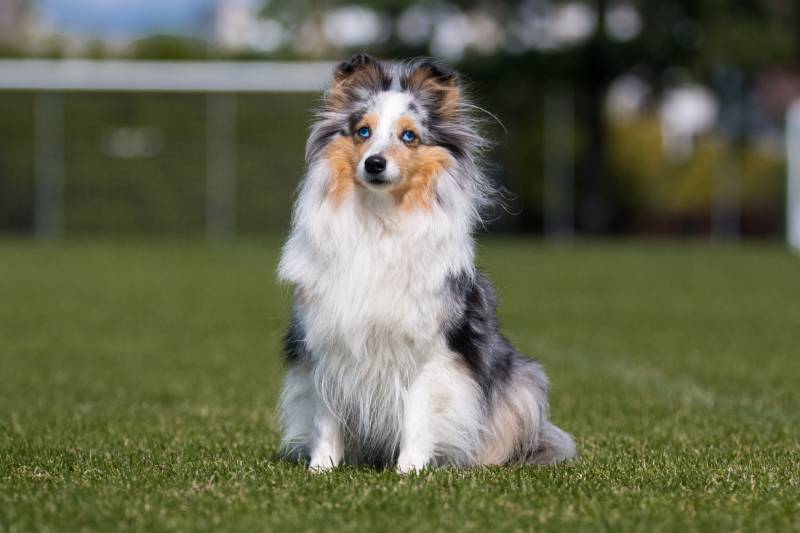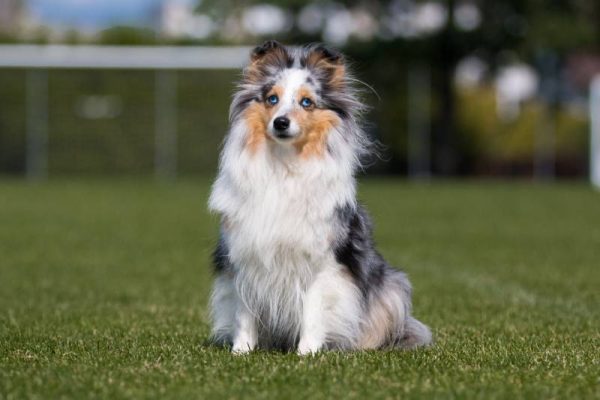Click to Skip Ahead
When introducing a new puppy into your life, it’s essential to know the breed’s characteristics to find a dog that fits you the best. The Shetland Sheepdog, often called a Sheltie, is a breed of dog that is very popular because of their high intelligence and their unique looks. They are very active and playful, which makes them great for families.
But if you are interested in other characteristics of this breed, for instance, how big they get, read on below.
Sheltie Breed Overview
Shetland sheepdogs originated from the Shetland Islands on the coast of Scotland, where they were used as guard dogs and herding dogs. But as time progressed, they were recognized as amazing dogs for families. They bond with their owners very quickly, which is not good if you spend a lot of time away from home; they can get lonely if left alone for too long.
All sheepdogs have a common characteristic: they are intelligent, which means they respond well to training. Considering what they were bred for, they are very active, meaning they will need a lot of exercise and playtime. Playtime is crucial for them because if they are bored, they will quickly find something else to do, and most of the time, it includes destructive behavior!
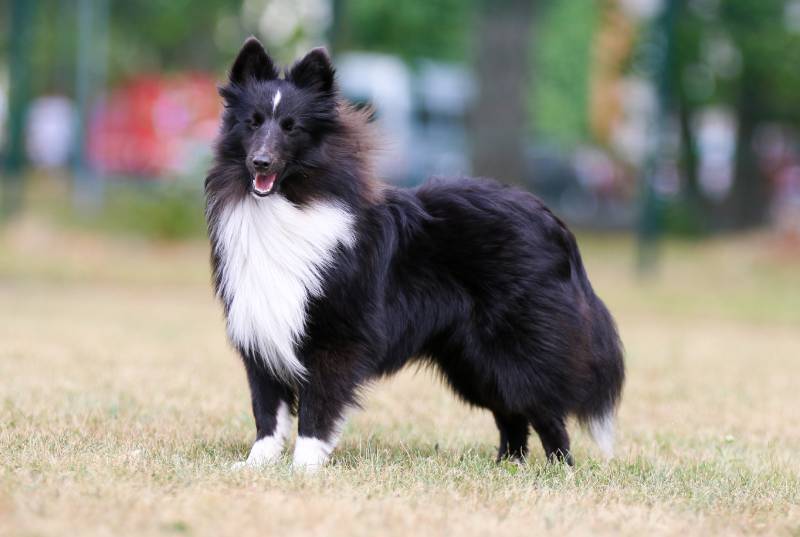
Sheltie Size & Growth Chart
Considered a medium dog breed, adult Shelties grow between 14 and 26 pounds. Of course, there will be differences in weight depending on their gender, but these differences will be minor. Their height ranges from 13 to 16 inches. Below, we have included a helpful chart that lists all weight changes as an average Sheltie grows. You can use this helpful chart to compare with your own dog.
| Age | Weight Range |
| 3 months | 6 lbs–11 lbs |
| 4 months | 8 lbs–15 lbs |
| 5 months | 10 lbs–17 lbs |
| 6 months | 11 lbs–20.5 lbs |
| 7 months | 12 lbs–22 lbs |
| 8 months | 13 lbs–23 lbs |
| 9 months | 13 lbs–23.5 lbs |
| 10 months | 13.5 lbs–24 lbs |
| 11 months | 13.5 lbs–24.5 lbs |
| 12 months | 14 lbs–25 lbs |
| 14 months | 14 lbs–26 lbs |
When Does a Sheltie Stop Growing?
Shelties are considered to be small to medium-sized dogs, but because of their long furry coat, they can appear bigger than they are. Like many other small dog breeds, you should expect your Sheltie to reach its full growth at around 12 months. But not all of them develop at the same speed—some grow faster, and some grow slower depending on genetics, diet, and other factors.
Don’t confuse their physical growth with their mental growth because even though they appear fully grown at 12 months old, they are still technically puppies and will take more time to mature.
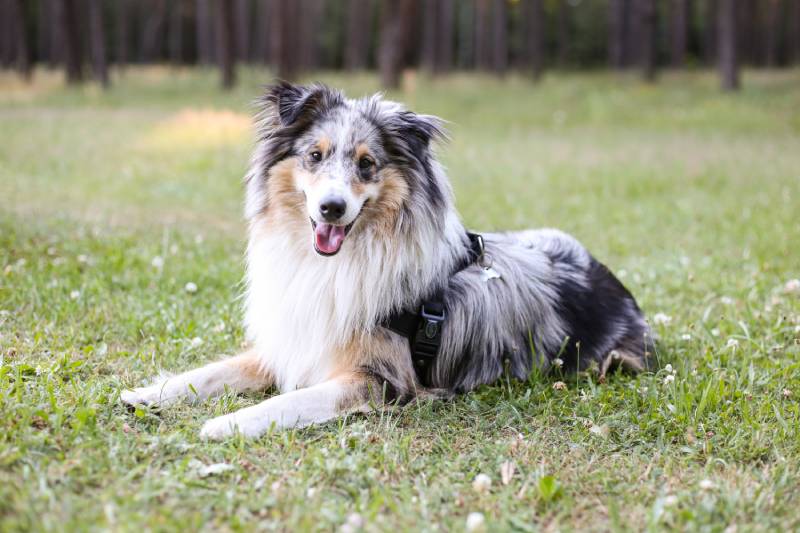

Factors Affecting the Size of Shelties
We already touched on the subject of factors that can affect the growth of your Sheltie, but now we will talk more about them. These factors include:
- Genetics
- Gender
- Nutrition
- Health issues
Genetics is a significant factor in the growth of a Sheltie because the parents’ size will determine how big the puppy will get—bigger parents usually mean your dog will be big too. Males also tend to get slightly bigger than their female counterparts. Diet is crucial for maintaining the healthy development of the bones and muscles in your Sheltie, so with that said, it should contain all the minerals and vitamins that they need.
Lastly, intestinal parasites and other health issues can cause problems with the growth of a Sheltie, so if you have a young dog that is still developing, don’t forget to take them for regular vet checkups to make sure they’re developing correctly.
Ideal Diet for Maintaining a Healthy Weight
Most experts recommend a complete kibble diet; but sometimes, you can mix it up and add some healthy meat, tinned food, vegetables, or rice. Kibble is made especially for your dog, which means they contain all of the nutrients that your Sheltie needs for their daily activities, and it will also help them maintain their body weight properly.
Shelties can get overweight quickly, so you mustn’t overfeed your Sheltie. While treats are an essential part of a dog’s training, try to cut their treats to a minimum to avoid them gaining weight. You can also try some healthier alternatives to dog treats, such as homemade options. These homemade treats will let you calculate precisely the amount of calories your Sheltie will consume throughout the day.
And finally, the most important thing for maintaining a healthy weight is a lot of activity, which will keep your Sheltie fit and strong and make them happy.
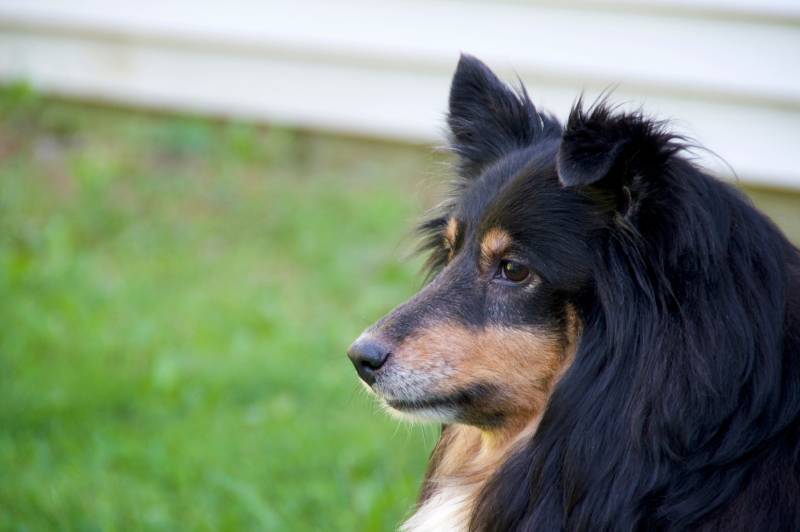
How to Measure Your Sheltie
Measuring your Sheltie is essential for keeping track of their growth and weight. If you want to measure your Sheltie’s height, we suggest that you do that while they are standing and have someone who can hold them and keep them from moving, or you can also press them against the wall gently but firmly. You should measure the space between the paw and the highest point of their body. Measure their chest circumference by wrapping a measuring tape around the widest part between the dog’s shoulders so that the tape passes right behind your Shelties front legs.
A similar method goes for measuring the neck circumference. Wrap the tape around the Sheltie’s neck, right over the top of their chest. It’s also important to measure the entire length of your Sheltie body, and you should measure the space between the neck and the base of the tail.
To accurately keep a weight chart of your pup, it is easiest to collect two measurements. The first is of your own, and the second is of your body weight while you are holding your dog in your arms. Subtracting your weight will give you the precise weight of your pup.

Conclusion
Shelties are very active dogs that require a lot of exercise and play, which you should consider carefully if you want to get one of these fantastic dogs. Hopefully, our article has helped answer any questions you may have regarding the growth of your Sheltie.
Featured Image Credit: Lisjatina, Shutterstock

